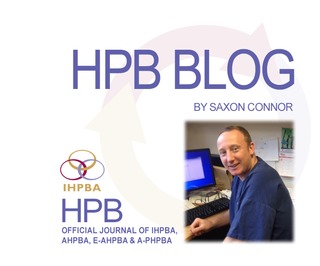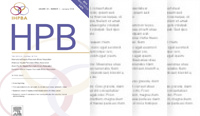International Hepato-Pancreato-Biliary Association
HPB Blog, June 2015

All you need to know about the future liver remnant in one issue of HPB.
In the June issue of HPB there is a selection of studies which address various themes related to the future liver remnant (FLR) following hepatic resection. Thomas et al describe the LiMON test which is a real time intraoperative assessment of the function of the FLR calculated using metrics based on indocyanine green clearance (ICG) following trial inflow clamping of the proposed resected segments. Predicted function correlated well with post resection function as well as short term clinical outcomes. Further work will however be required to determine the optimal cut off values, thus allowing the surgeon to confidently proceed or retreat to a staged approach. Whether that staged approach should be an ALPPS procedure or portal vein embolization (PVE) remains contentious. Croome et al describe a comparative analysis examining change in volume and kinetic growth rate of the FLR following four clinical scenarios; PVE, ALPPS, liver transplant recipients and hepatic living donors. Although ALPPS showed significantly greater increases in growth parameters as compared to PVE, the changes weren’t as significant as those seen in the living donor cohort. There were some differences between the ALPPS groups and the PVE group in terms of clinical factors but in particular the time to scanning in the PVE group was at a mean of 40 days compared to 8 days for the ALPPS group. Given that hepatic hypertrophy does not occur linearly with time the kinetic growth rates will be skewed in favour of ALPPS. Interestingly a small proportion in the PVE group did not proceed with the second stage of surgery due to tumour progression in the remnant. This raises the possibility that growth factors released following PVE may be stimulating contralateral tumours. Spelt et al have tried to determine if this is the case in a small cohort of 34 patients. They did not find any difference in tumour progression between those tumours in the embolised or non embolised lobes. The strongest predictor of tumour progression was increasing time between end of chemotherapy and time to perform PVE. It is however possible that this negative finding was due to the short time period between PVE and reassessment (16 days in this study) or the strict criteria to define tumour growth (RECIST criteria).
This blog has covered only a small selection of the studies presented in the June issue of HPB. It is worth noting several important papers relating to pancreatic surgery especially the paper by Sanford et al suggesting epidurals may be associated with improved perioperative outcomes following pancreatic surgery.
Click here for the Table of Contents.
Saxon Connor
Corporate Partners
If you are interested in becoming a Corporate Partner of the IHBPA please contact industry@ihpba.org
Find out more


